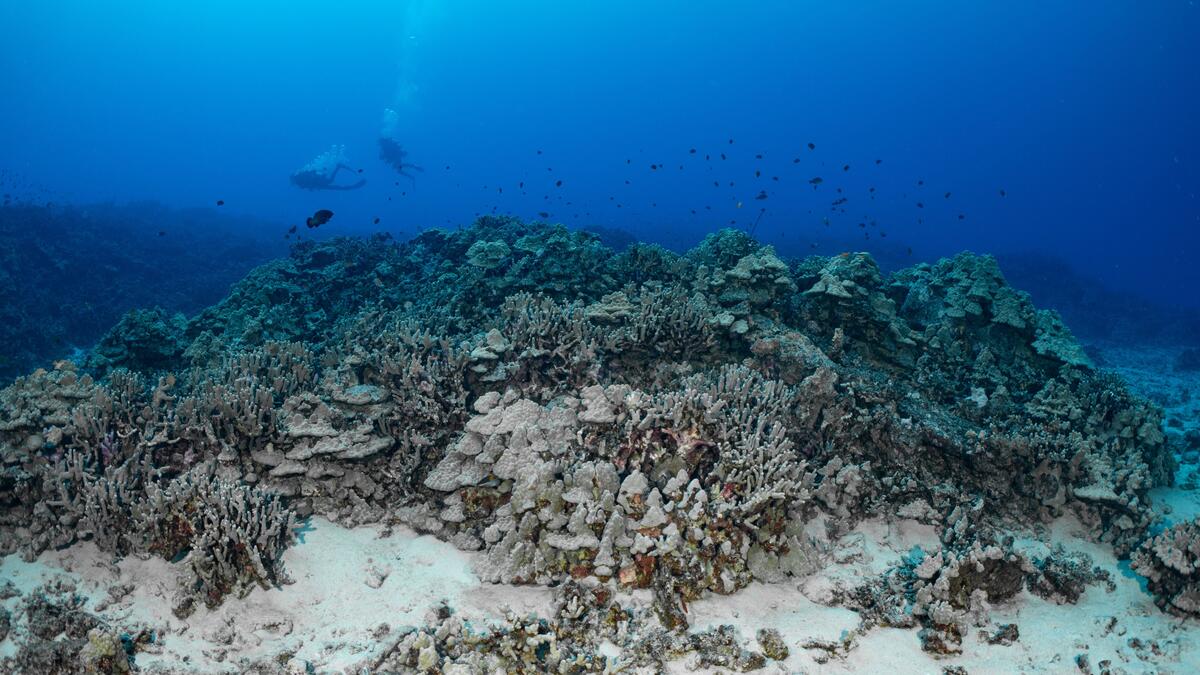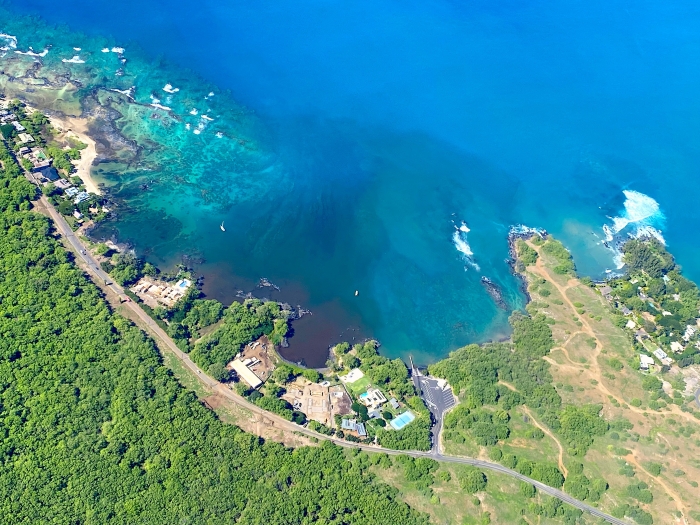New research confirms land-sea relationship is major driver of coral reef health outcomes

Climate change has long been considered as one of the greatest drivers of declining coral reefs, but the specifics of human impact have been largely unverified.
In a new paper, researchers tracked coral reef health in Hawaii for 20 years — measuring increasing water acidification, land-based pollution, repercussions from a major climate event and rising water temperatures — and illustrated the undeniable contributions of human impact on coral reef health outcomes.
New research by Arizona State University, the National Oceanic and Atmospheric Administration’s Pacific Islands Fisheries Science Center and Bangor University in the U.K. indicates that mitigating both local land- and sea-based human impacts, especially in terms of pollutants and overfishing, provides coral reef ecosystems with the best opportunity to persist under climate change.
Along some highly populated areas on the shorelines of Hawaii, wastewater pollution and urban runoff combine with fishing pressures to put immense stress on coral reefs.
The paper, “Coral reefs benefit from reduced land-sea impacts under ocean warming,” published in Nature, a multidisciplinary science journal, on Aug. 9.
“There is a very strong perception that declining reef health is mainly driven by climate change, which is true in the long term," said Greg Asner, senior author of the study and director of ASU's Center for Global Discovery and Conservation Science, a unit of the Julie Ann Wrigley Global Futures Laboratory
"However, what we are putting in our waters from our shores, as well as the amount of fishing we are doing, are huge drivers that are more immediately actionable.”
Asner, also a faculty member in the School of Ocean Futures, said the 20-year time frame provided a unique opportunity to reflect on solution strategies.
Aerial photograph of Hawaii showing coastal development and land-based impacts adjacent to coral reefs. Photo credit: Greg Asner/ASU
The answer to revitalizing the land-sea relationship lies both in policy and community involvement, Asner said. This is why ASU and a group of core partners established ʻĀkoʻakoʻa, an effort, led by Asner, that draws on community collaboration to restore the health of Hawaii’s reefs and coastlines.
ʻĀkoʻakoʻa, which shares a double meaning of “corals” and “to assemble,” fuses state-of-the-art science with cultural knowledge and leadership. Through collaborative efforts, ʻĀkoʻakoʻa will directly measure and inspire positive interventions within the land-sea connection.
As the research paper details, 2015 proved to be a particularly demonstrative year of human-caused threats to our oceans; this was the year that Hawaii experienced the strongest marine heat wave on record over the past 120 years.
“The 2015 marine heat wave in Hawaii was unprecedented. Nothing comes close in well over a century of recorded temperature data,” said Jamison Gove, a research oceanographer with the Pacific Islands Fisheries Science Center and co-lead of the study.
“As a consequence, many reefs in our study region experienced severe bleaching and extensive coral death," Gove said. "But to our surprise, we found that coral cover was unchanged at nearly 20% of reefs in our study. Which begs the question: Why did some reefs fare better than others despite experiencing similarly extreme levels of heat stress?”
Local land-sea conditions were the difference. The reefs that had less coral loss from the heat wave were the same reefs with the lowest levels of land-based stressors and increased fish populations.
Asner said land-sea relationships are an area that can be greatly affected by policy efforts.
“We are deeply embedded with county, state and federal governments and working to try to resolve these issues,” Asner said. “Each of these governments can tackle a different tier of the problem, from wastewater issues to overarching climate change. Some of these issues will take longer to mitigate but some can see positive change now — wastewater issues can sometimes come down to individual buildings and houses.”
Wastewater pollution contains a high concentration of nutrients, toxins and pathogens that are known to increase coral disease and decrease growth and reproduction. Asner said septic tanks and cesspools, both common in Hawaii, can be especially harmful to coral reefs.
Gareth Williams, associate professor at Bangor University and co-lead of the study, said the long-term research done through this study supports the theory that the land-sea relationship is an especially important element in coral reef protection.
“Integrated land-sea management has been the guiding paradigm of coral reef conservation for decades, but the proof of its efficacy above managing land or sea in isolation has been wanting and difficult to test,” Williams said.
“Through the 20-year data set of local human impacts and environmental factors, we are able to see that only by adopting coupled land-sea policy measures, alongside global reductions in greenhouse gas emissions, will coral reef ecosystems and the human communities they support have the best opportunity for persistence in our changing climate.”
Top photo: Coral reef ecosystems, like this reef on Hawaii Island, are more likely to persist under ocean warming when local human impacts originating from land and sea are reduced simultaneously. Credit: Greg Asner/ASU
More Science and technology

ASU water polo player defends the goal — and our data
Marie Rudasics is the last line of defense.Six players advance across the pool with a single objective in mind: making sure that yellow hydrogrip ball finds its way into the net. Rudasics, goalkeeper…

Diagnosing data corruption
You are in your doctor’s office for your annual physical and you notice the change. This year, your doctor no longer has your health history in five-inch stack of paperwork fastened together with…
Large-scale study reveals true impact of ASU VR lab on science education
Students at Arizona State University love the Dreamscape Learn virtual reality biology experiences, and the intense engagement it creates is leading to higher grades and more persistence for biology…


